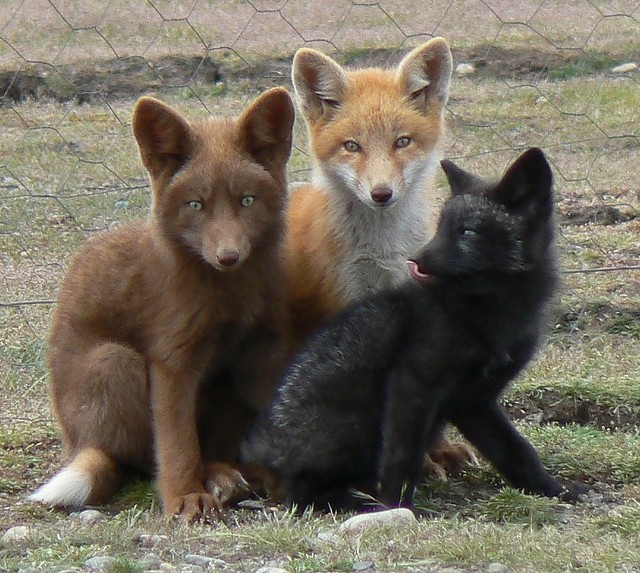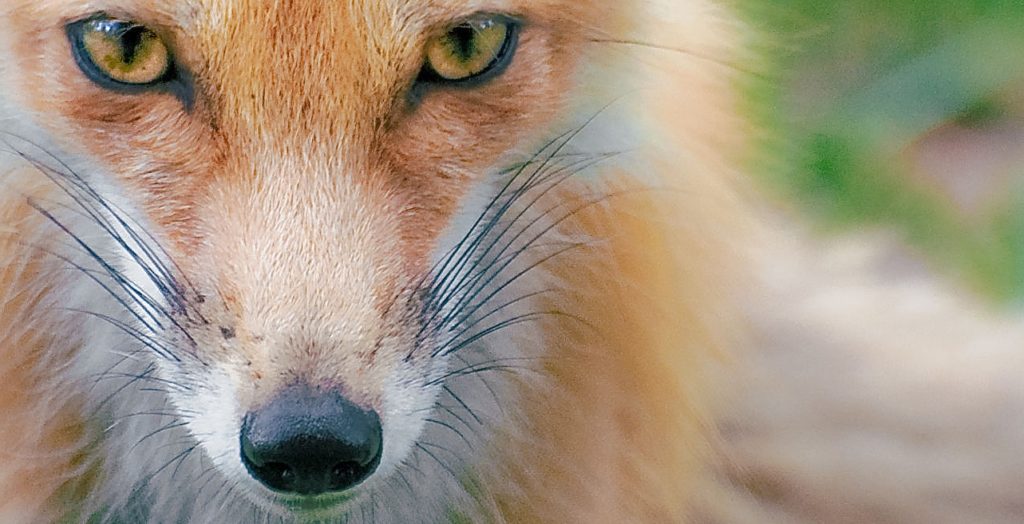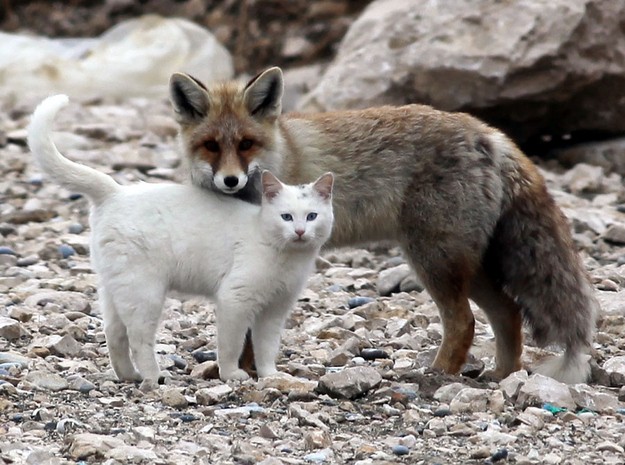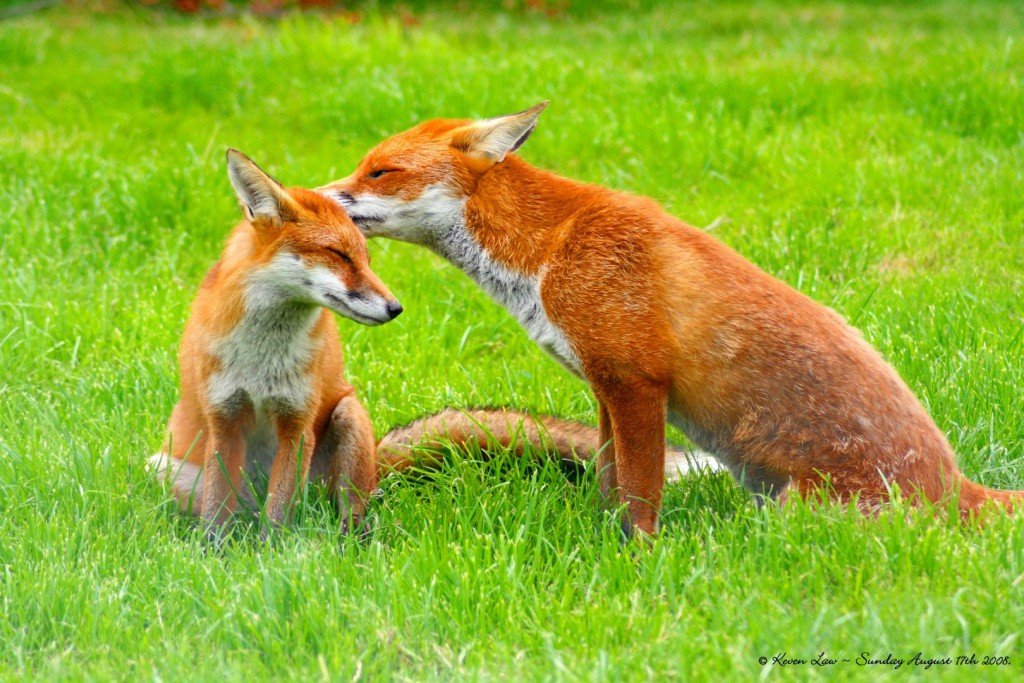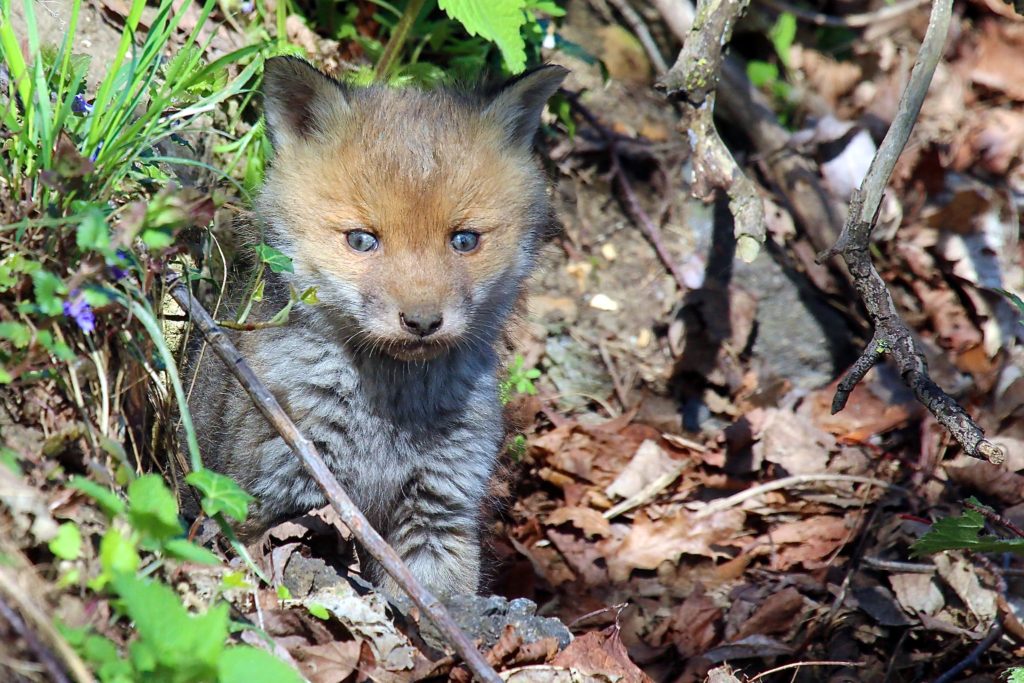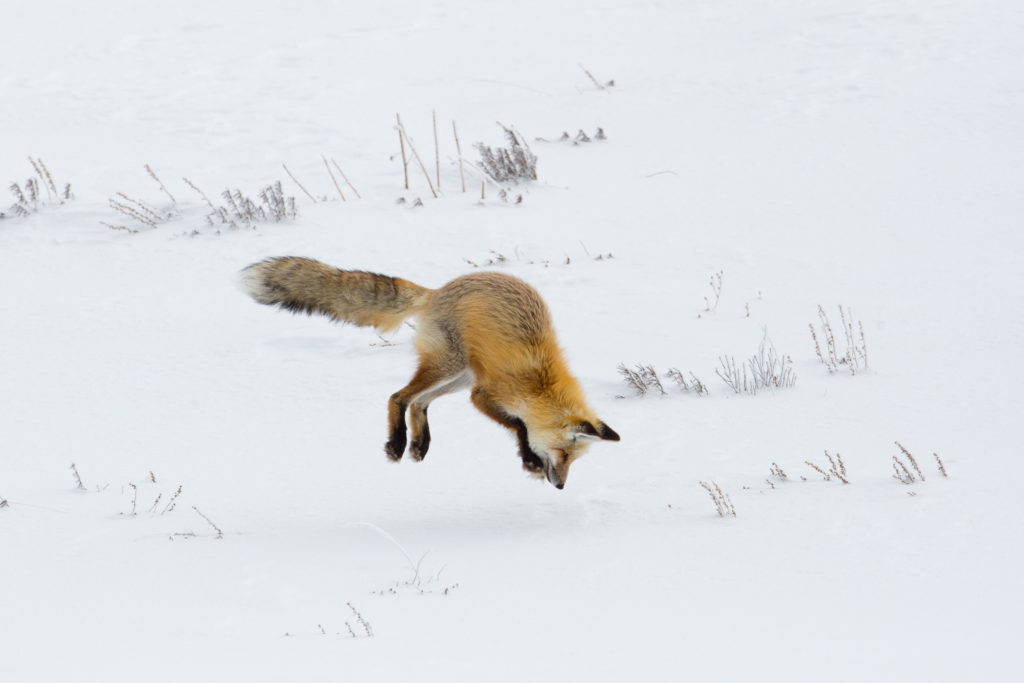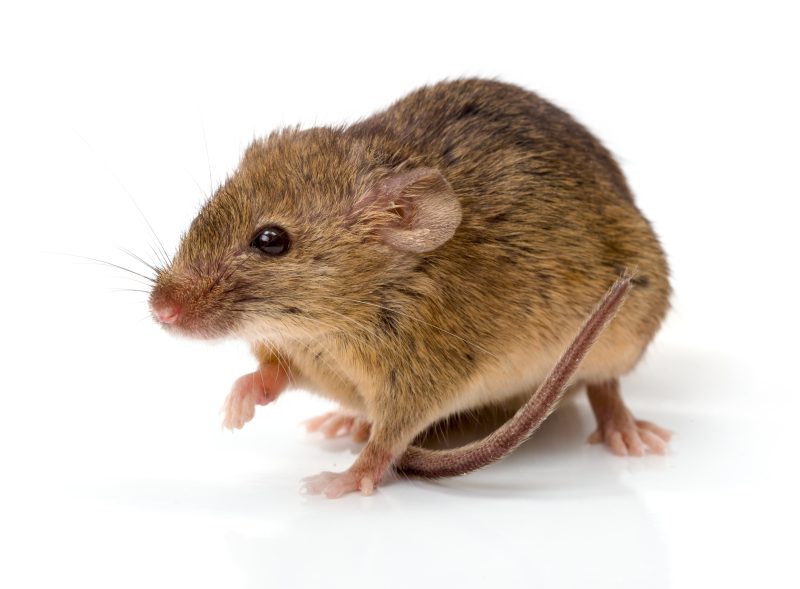Would it surprise you to learn a Red Fox is your neighbor? Even in the city? They often stay put when urbanization consumes their habitat, remaining just out of sight as the city builds around them. The common phrase “smart as a fox” isn’t an empty one. They’re intelligent, clever, and resourceful, so they simply exchange their country-bumpkin ways for the life of a city slicker. That might mean calling your yard home, where they quietly rest out of sight by day and stealthily sweep it at night for edibles.
There are many species of foxes, but when we think of ‘fox,’ isn’t it the Red Fox that first comes to mind? It’s one of the earth’s most widely distributed land carnivores and the fox most often seen in our cities. There are 45 subspecies spread around the world, except for Antarctica and South America. Ten of them inhabit the United States, except the desert Southwest.
Background
Red Foxes have existed for eons. Their oldest fossils, found in Hungary, date back to the late Pliocene and early Pleistocene Epochs, 3.4 to 1.8 million years ago. It’s thought that foxes found their way to North America between 300,000 and 130,000 years ago by crossing a sheet of ice that connected Asia and N.A. The Bering Land Bridge was covered by deep water 10,000–11,000 years ago.
The word “fox” is derived from the Old English and Old Saxon vohs, Middle Low German vox, and Old High German fuhs. The accepted Latin name for the Red Fox is Vulpes vulpes. Canidae (CAN-uh-dee) is the family to which it belongs, and that name comes from the Latin canis, meaning dog. Canidae also includes the Coyote, wolves, jackals, domestic dogs, and other canids.
Physical description
The Red Fox resembles a little dog with a long, pointed snout and triangle-shaped ears. It typically has white hair under its neck and on its chest. The ears, legs, and feet are dark brown to black. Their eyes, which are a distinctive amber color with vertical pupils, face forward on their head, giving them binocular vision like a human’s, but they primarily react to movement like cats do.
The hair color of Red Foxes may vary in shade from a light-yellowish tone to deep auburn-red, and some are an entirely different color—black, silver (black with white hair tips), or red with black across the shoulders. As if that wasn’t enough color variation for the “Red” Fox, there are also several genetic mutations. So, you can’t always expect to identify a Red Fox by its hair color. However, there’s one tell-tale tip, so to speak, that makes it pretty conclusive: The tip of their bushy tail is almost always white.
Red Foxes are smaller than they seem. They have long, silky guard hairs and a soft, thick underfur that bulks up their appearance, especially when wearing their winter coats. Beneath, their frame is delicate and thin—they weigh only 10–15 pounds (4.5–7 kg)—comparable to a miniature poodle. Still, they’re the largest fox species, at about 20–26 inches long (51–66 cm), and their tail is another 14–16 inches (36–41 cm). They have five toes on the front feet, four on the back, and long sharp claws. They’re fast on their feet—for short bursts, they can run as fast as 30 miles per hour (48km/h).
Senses
Their sense of smell is excellent, and their hearing is so sharp they can hear small animals digging underground, even under snow (if they’re hungry, they dig them up). They use their hearing almost exclusively in the winter for hunting, listening for the sounds of mice and voles moving about under layers of snow or debris. At any time of year, when they jump on prey, they do it mainly in a northeasterly direction, about 20 degrees off from magnetic North. Curious. It turns out that their success rate drops considerably when jumping from other directions! Researchers think that foxes use the earth’s magnetic field to triangulate the location of hidden prey.
Communication
Red Foxes communicate with each other using facial expressions—”grinning” when being submissive, for example—as well as posture and movements of their ears and tail. They also vocalize and produce different calls that span five octaves. Adults have at least 12 distinctive calls, and their babies produce eight. Sounds include sharp barks, yaps, yells, raspy “chirps,” howls, purrs, trills, and screeches. Some sound rather plaintive. The tiny barks of the babies are much like the sounds of our own happy puppies.
Red Foxes communicate in another way, too. They’re territorial and mark their home ranges with pungent-smelling urine and feces. They also spray fluid from a gland on the upper surface of their tail. Called the “Violet Gland,” for its mix of chemicals similar to those produced by violets, it seems like it should be pleasant. But it’s too much of a good thing: the foxes produce it in such overbearing quantities it smells something like skunk musk. (Some other mammals, including dogs, have this gland, too, which should make us thankful that Fido doesn’t use it for marking in our homes!)
Behavior
Red foxes are nocturnal (out at night), but you may see them out and about in the daytime. If they feel safe in your yard, they might visit it even mid-day—especially if they hankered for, say, squirrel à la carte, a strictly daytime delicacy.
A Red Fox’s territory is no larger than it needs to be. In the city, where food sources are more plentiful and closer together, a territory may be no more than a few acres, while rural ranges may measure in miles. Territorial disputes between foxes can sound vicious but normally end without bloodshed.
Here kitty, kitty!
They share a surprising number of characteristics with cats, beginning with their long, sensitive whiskers; long, thin teeth; and eyes that have slit pupils and shine in the dark.
Red Foxes can run at 30 miles per hour (48 km/h), but their hunting method is like a cat’s: They slink down to the ground and then, leaping into the air, pounce on the prey with their front feet, pinning it. A series of swift bites with dagger-like teeth promptly kills their prey; that is if the fox doesn’t first play with it a bit, just as a cat might do. Also, like a cat, they don’t shake their victim, as most other canines do.
They sit and sleep with their tail curled around their body in a cat-like way. They even show similarity when they fight by fluffing their hair, arching their backs, and charging an opponent sideways.
So, considering all this, why aren’t they cats? Scientists say it’s the result of “convergent evolution,” where two species not closely related behave as though they are because of the ecological niche and or habitat they occupy.
Danger depends on who’s doing the telling
Red Foxes have a reputation as cunning, murderous nuisances. These reports come from farmers who lose chickens and sport hunters who lose small game birds and animals to them. Ranchers claim they take lambs. However, over the past 20 years, studies have consistently shown the lambs were already dead, weak, or non-viable. Recently some farmers have begun to welcome Red Foxes, finding them more beneficial than detrimental because of their heavy predation on rodents and rabbits.
Around humans, foxes are non-confrontational and make every attempt to avoid conflict. Unless forced to defend themselves, they won’t attack, not even young children. Typically, they lay low, but those living in urban areas can become so accustomed to humans that they exhibit little fear when they come face-to-face with people. If you find one observing you, don’t interpret it as a threat, because they’re curious by nature.
Cover and dens
When not hunting, Red Foxes spend their time curled up under a brush pile, under shrubs, or in a dense thicket. They don’t generally use a den unless their thick fur coat and warm, bushy tail, which they use as a blanket, aren’t keeping them warm enough in frigid winter weather. When they do want a den, they dig one or, better yet, take over the abandoned lair of a burrowing animal.
There’s one other time they use a den. That’s when females are raising their young. To prepare for parenting, the female selects a den site (called a natal or maternal den), typically on the side of a hill. She and her mate work together and may dig one as long as 8 feet or more (0.5–2.4 m), with more than one opening, so they can’t be trapped inside.
Alternatively, she might choose a den site under a fallen tree trunk, under a shed, or even inside an abandoned building, and may have several dens, providing “safe houses” in the event of a threat. (This kind of cunning makes them a challenge for hunters and trappers.) She may use the same natal den year after year.
Reproduction
Females have just two to four days once a year when they’re receptive to mating. Mating occurs between mid-January and March, depending on the climate they live in (later in the North, earlier in the South). The babies (called kits or cubs) are born 49 to 58 days later. There might be as many as 10 to a litter or as few as three, but four or five is typical.
The kits weigh only about 4 ounces (113 g) at birth; their eyes are closed, ears folded, and they’re toothless. But, like a newborn puppy, they already have a coat of charcoal-gray or even black hair, with a white-tipped tail. In about 13 days, their eyes and ears open, and their teeth start to grow. Their eyes are blue at first but change to amber at 4 to 5 weeks. Within a month, their hair begins to turn red.
Good parents
Their mother (called a vixen) dotes on them, keeping them warm and clean, and stays with them constantly for the first two weeks. The male (called a dog or dog fox) acts as hunter and caterer, bringing the female whatever meal he’s caught. At three weeks, the parents begin to supplement the mother’s milk with regurgitated meat to chew. At four or five weeks, although still nursing, the youngsters make tentative explorations of the area around the den, and their parents bring them small, live prey so they can learn how to kill.
At seven or eight weeks, the parents begin taking the kits on short hunting excursions. As their skill grows and they find and catch more of their own food, their mother starts weaning them. Finally, at three months, they’re fully weaned. If their mother dies before the kits can fend for themselves, their father will continue to care for them.
The curious, playful, and energetic kits behave much like puppies: They wrestle and tumble over each other, tug and run and chase. They gnaw on twigs, taste leaves, dig up grubs, and torment and chew on bugs. Their parents may leave “toys,” like bones and other objects, for them to play with. The kits also play-fight and work on their pouncing skills. Both parents are attentive and protective and often play with their offspring.
At first, all hunt as a family, but they don’t take down their prey in a pack, as wolves will do. Instead, they each stalk and kill their own. The offspring are fully grown at about 10 months. They stay together as a family until fall, when the male kits go off to establish a territory of their own. Females leave a few weeks later.
Family dispersal
Kits living in urban areas are less likely to disperse than those in rural areas. (This may be related to more plentiful food in the city.) Some males stay in their parent’s territory but not as part of the family group. Females may sometimes remain with their mother for a year or more and serve as “helpers” with the following year’s litter. Red Foxes often mate for life, although the male goes his own way in the fall until the next mating season. The parents may cross paths from time to time but, otherwise, take a break from each other.
Food sources
Red Foxes are considered carnivores, but in reality, their diet includes plant foods, making them more like omnivores. Their diet includes rodents, rabbits, grasshoppers, beetles, crickets, birds and eggs, amphibians, reptiles, fish, earthworms, and caterpillars. With their keen hearing, if they detect small animals digging underground, they dig them up, just as the fox shown below is about to do.
Living in the city, they’ve learned to search for fruit, berries, greens, whatever is in a garbage can, leftover dog food, and even carrion. They’ll eat pretty much anything edible—but only a bit at one time; they have a small stomach and eat portions totaling about 1–2 pounds (0.5-0.9 kg) of food a day. They’re smart about how they gather food, too–take a look at this: Video of Red Fox building a sandwich!
The foxes share a trait in common with squirrels: They bury extra food. When they get lucky and catch more than they can eat in one sitting, they cache it by digging a hole and burying it. They may have small caches scattered in several places in their territory. They also mark it to announce its owner. Sometimes they dig up a cache to make sure it’s still there, then re-bury it. (Your dog probably does the domestic version of this by hiding bones or rawhide chews behind potted plants or between sofa cushions.)
Habitat
Red Foxes are found wherever there are suitable prey and sufficient cover. They’re found in various habitats, including deserts, tundra, woodlands, meadows, and pastures. Their preference, though, is a mix of open areas and forest, where they use the edge (transition zone) between these two areas for hunting. Where there’s suitable habitat, three or four foxes may share a square mile. Rural Red Foxes are known to move into cities to avoid competition for food and to stay safe from predators, such as Coyotes.
Lifespan
Those that live to adulthood live an average of five years. A 2007 study in Illinois of urban Red Foxes showed that 31 percent were killed by vehicles, and periodic outbreaks of sarcoptic mange killed about 45 percent. Out in the country, mange isn’t a significant problem, but predators are. In captivity, Red Foxes can live 15 years.
Predators
The most significant predator of Red Foxes is humans, who hunt them for sport, fur, and as nuisances. Kits are easy prey for other predators, including Coyotes, Gray Wolves, Mountain Lions, eagles, and owls.
Foxes and rabies
It’s commonly thought that a fox seen in the daytime must be rabid. That’s incorrect. Foxes may go out during the day to play, find food, or bask in the sun. It isn’t common for them to have rabies. According to the most recent Rabies Surveillance Report (2020) by the U.S. Centers for Disease Control and Prevention, across the entire country, there were 361 rabid foxes reported. More than half the states had no occurrences at all.
Wildlife’s good mothers
All about Fox Squirrels and Gray Squirrels


